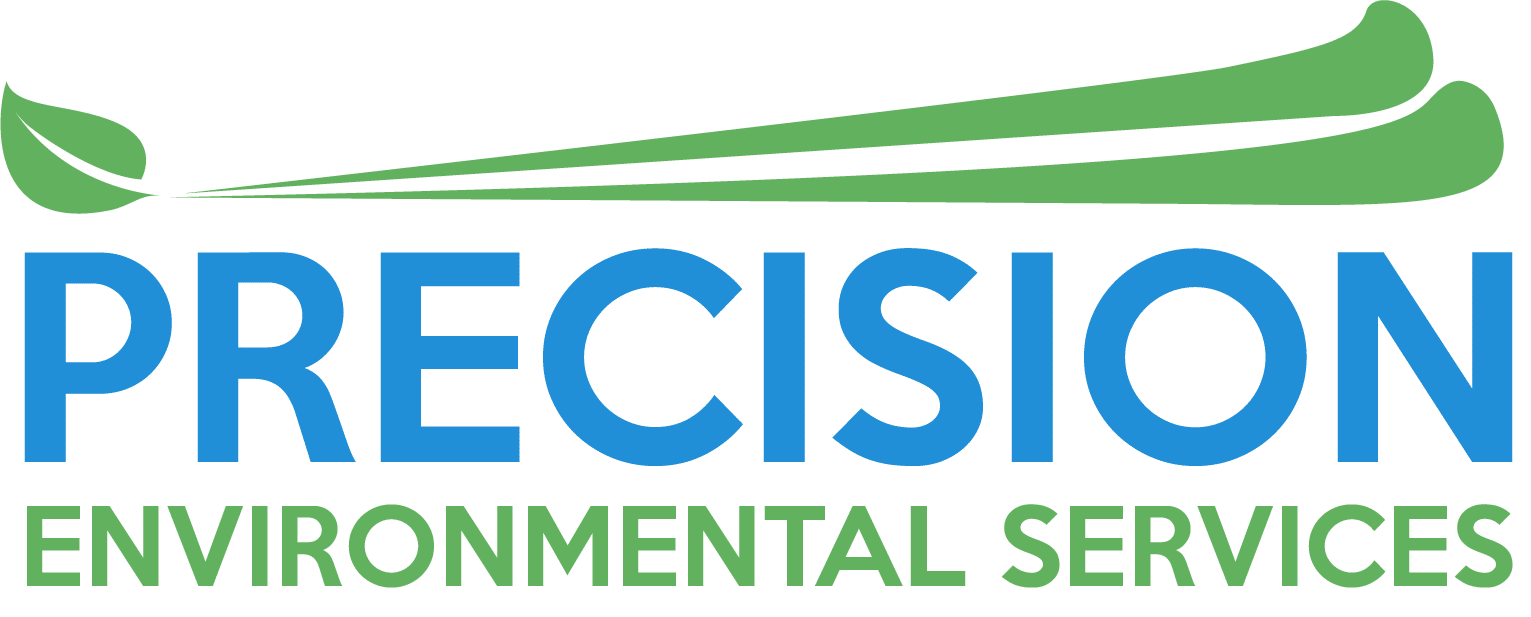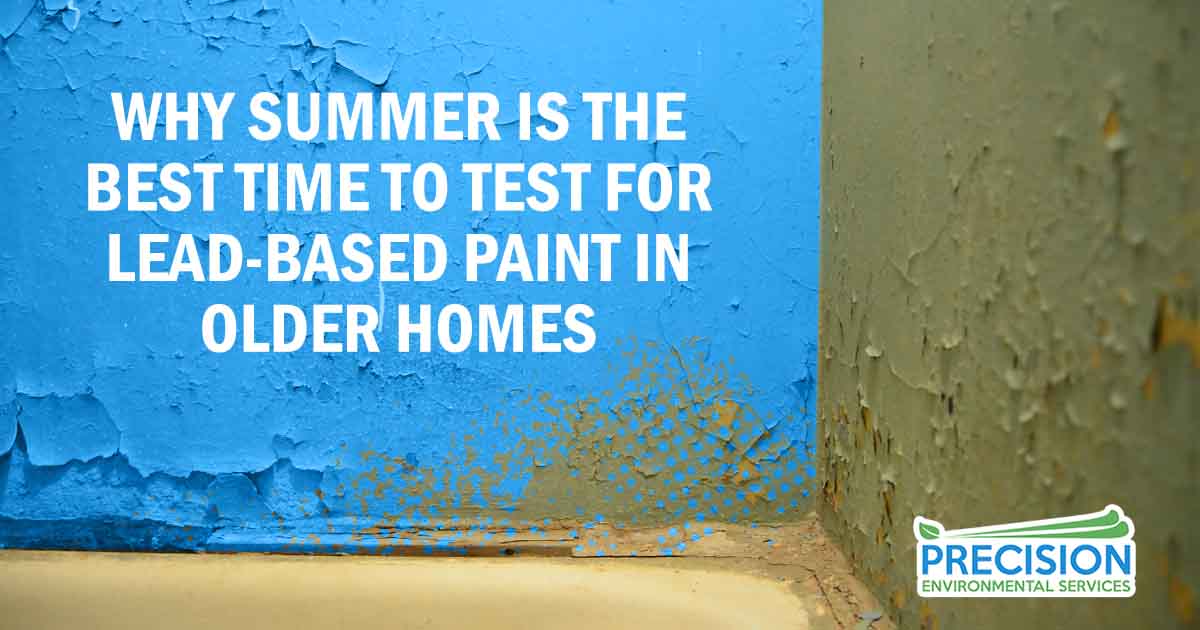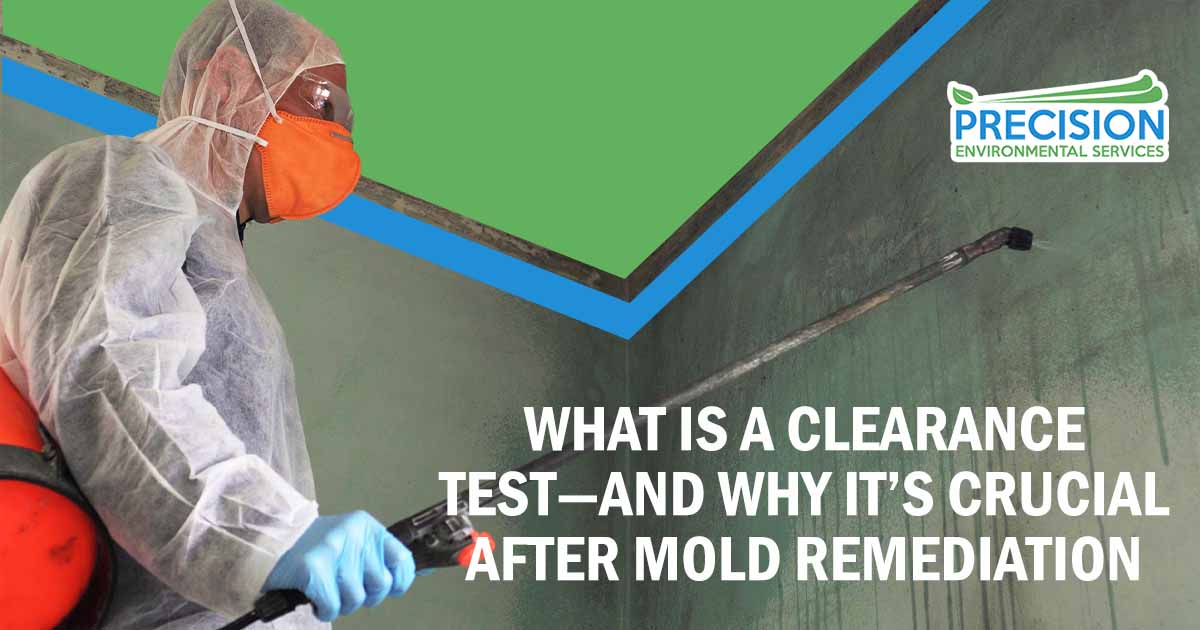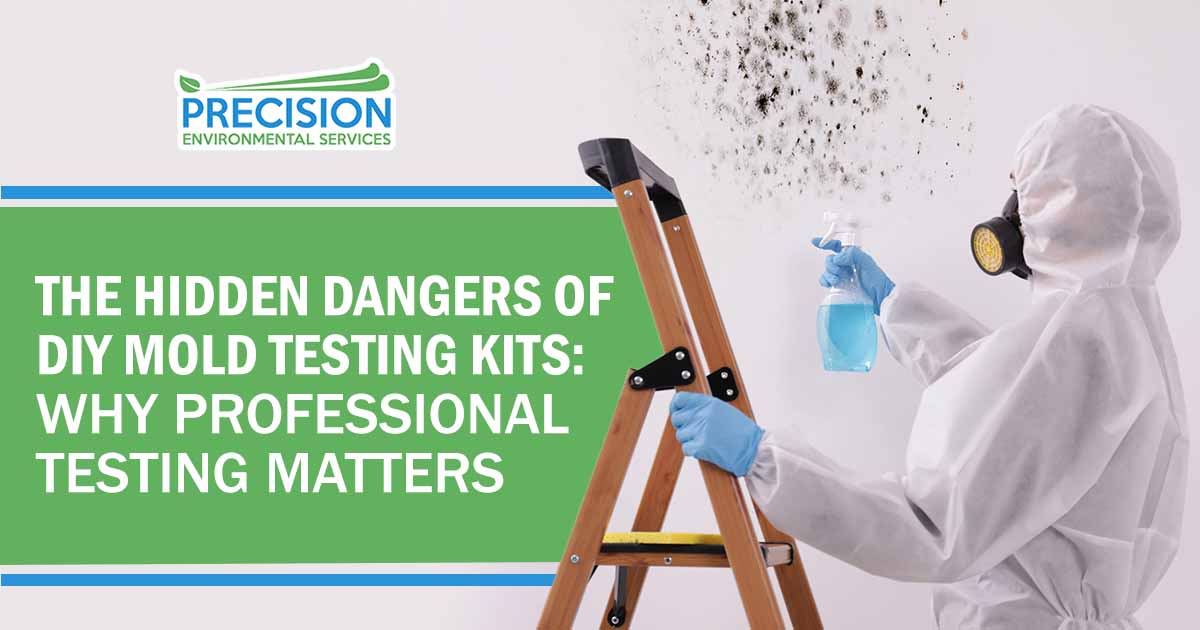Homeowners considering summer renovations should prioritize lead-based paint testing in older homes, especially those built before 1978. Disturbing lead-painted surfaces without proper precautions can pose serious health risks, particularly to young children and pregnant women. Precision Environmental Services offers professional lead-based paint inspections to help homeowners stay safe and compliant before beginning any renovation project.
The Importance of Lead-Based Paint Testing in Older Homes
Why Homes Built Before 1978 Are at Risk
The federal government banned residential use of lead-based paint in 1978. Homes constructed before this year may still contain lead in walls, window frames, doors, and trim. Over time, painted surfaces can chip or deteriorate, releasing lead-contaminated dust into the air. Even intact paint can pose a hazard if disturbed during remodeling or repair.
Many older properties have never undergone lead paint inspection or remediation. As a result, homeowners often remain unaware of the risks hidden in plain sight. Testing is the only reliable way to determine if a home contains lead-based paint and whether it presents a current or future hazard.
Who Is Most at Risk of Lead Exposure?
Lead exposure is hazardous for young children. Ingesting or inhaling even small amounts of lead can cause developmental delays, learning difficulties, and behavioral problems. Pregnant women exposed to lead may face increased risks of miscarriage, premature birth, or developmental issues in the unborn child.
Adults living in homes with lead-based paint can also experience health effects, particularly if they are involved in DIY renovations or breathing in lead-laden dust. The risks are amplified when proper containment measures are not used.
For these reasons, lead-based paint testing should be completed before any renovation, repainting, or demolition is started in homes built before 1978.
Why Summer Is Ideal for Lead-Based Paint Inspections
Summer Renovation Season Increases Disturbance Risks
Summer is the busiest season for home improvement projects. Homeowners often take advantage of warm weather and longer daylight hours to repaint, remodel, or repair parts of their homes. However, these activities frequently disturb painted surfaces in older properties—especially houses built before 1978—where lead-based paint may still exist.
Renovation tasks such as sanding walls, replacing windows, or tearing out old trim can release lead dust and paint chips into the air. Without testing and proper containment, this dust can spread throughout the home, posing a serious risk to occupants. This is why lead-based paint testing in older homes is a necessary first step before starting any renovation project during the summer months.
Lead testing helps homeowners identify areas where hazards exist, allowing them to avoid accidental exposure. In many cases, identifying problem areas early enables safer project planning and ensures the work complies with EPA Renovation, Repair, and Painting (RRP) Rule requirements.
Higher Occupancy and Children at Home
Summer often means more people at home—especially children who are out of school. Children tend to spend more time indoors during hot weather, thereby increasing their exposure to environmental risks within the home. This is particularly concerning in homes with peeling or deteriorating paint.
Children are more likely to play on floors, touch painted surfaces, and put their hands in their mouths. If lead dust is present, even invisible amounts can lead to poisoning over time. Pregnant women, too, maybe spending more time indoors during hot months, adding another layer of concern.
By scheduling lead-based paint inspections during the summer, families can take proactive steps to protect household health. Testing provides peace of mind and ensures safe conditions before families fully occupy or renovate an older home during peak season.
How Lead-Based Paint Testing Works in Older Homes
Types of Lead Paint Testing Methods
Homeowners considering lead-based paint testing in older homes can expect to encounter several methods used by professionals to detect the presence of lead. The most common method is XRF (X-ray fluorescence) analysis, a non-destructive technique that quickly identifies lead content in paint layers without requiring the removal of any materials. This approach is efficient for inspecting multiple surfaces throughout a home.
Another method is lab-based paint chip analysis, where small samples are collected and sent to a certified lab for detailed testing. While this process may involve minor surface disruption, it delivers highly accurate results. In some cases, dust wipe sampling and soil testing may also be recommended, particularly around windows, baseboards, or areas where children play.
Each method is selected based on the home’s condition, the extent of the renovation planned, and the potential risk to occupants. A professional inspection helps ensure comprehensive and reliable findings.
Professional vs. DIY Lead Testing
While DIY lead testing kits are available at hardware stores, they often lack the sensitivity and accuracy required for high-stakes decisions. False negatives are common, which can give homeowners a false sense of security. These kits also do not provide the documentation needed for real estate disclosures or regulatory compliance.
In contrast, certified professionals—such as those at Precision Environmental Services—use EPA-approved tools and methods to provide precise, reportable results. Professional inspections are essential for homeowners planning to remodel, rent, or sell older properties. They also meet federal and state requirements where lead disclosure is necessary.
Hiring a licensed lead inspector ensures that lead hazards are correctly identified, explained, and documented, reducing both health risks and liability concerns for the homeowner.
How Precision Environmental Services Helps Identify Lead Hazards
Certified and Experienced Lead Inspectors
When it comes to lead-based paint testing in older homes, working with a certified and experienced provider is essential. Precision Environmental Services employs EPA-certified inspectors who specialize in identifying lead hazards in residential properties built before 1978. Their team has extensive experience working with homeowners, real estate professionals, and renovation contractors throughout Virginia and surrounding regions.
By staying current with federal and state regulations, the inspectors at Precision Environmental ensure that each assessment is thorough, compliant, and tailored to the unique needs of the property. Their approach helps homeowners make informed decisions about how to proceed with renovations or remediation.
Comprehensive Testing and Clear Reporting
Precision Environmental Services offers comprehensive lead testing, encompassing XRF analysis, paint chip sampling, dust wipe tests, and soil analysis as needed. During the inspection, technicians assess key areas, such as window sills, door frames, baseboards, and other surfaces that are likely to contain or release lead dust.
After the inspection, clients receive a detailed report outlining any areas that tested positive for lead, along with risk assessments and professional recommendations. These reports are clear, easy to understand, and suitable for documentation during real estate transactions, renovations, or property management.
Although Precision Environmental does not offer legal advice or abatement services, their inspection reports can guide homeowners toward the following steps and qualified remediation professionals, ensuring safe conditions for all occupants.
What to Do If Lead-Based Paint Is Found
Safe Renovation Planning and Lead Abatement Options
If lead-based paint is detected in the home, homeowners should avoid disturbing the area without a clear plan in place. Any renovation, demolition, or repair work involving lead-painted surfaces must follow specific safety protocols outlined in the EPA’s Renovation, Repair and Painting (RRP) Rule. These rules require certified contractors to use protective equipment, contain dust, and thoroughly clean up after themselves.
Depending on the condition of the painted surfaces, homeowners may choose between encapsulation, enclosure, or complete abatement. Encapsulation involves sealing the lead paint beneath a special coating, while enclosure uses materials like drywall or paneling to cover the surface. In high-risk areas or severely deteriorated surfaces, professional lead paint removal may be necessary.
Precision Environmental Services does not perform removal, but its inspection reports can help homeowners identify which areas require immediate attention and assist in selecting qualified lead abatement professionals.
Avoiding DIY Removal That Increases Exposure Risk
Attempting to remove lead-based paint without proper training and equipment can release hazardous dust throughout the home, posing a significant health risk. Standard DIY methods such as sanding, scraping, or using heat guns can dramatically increase the risk of lead poisoning—especially for young children and pregnant women.
Instead of DIY solutions, homeowners should rely on certified professionals to conduct any lead-related renovation work. Testing first ensures the scope of work is understood and that proper precautions are in place from the start.
Summer Home Projects to Avoid Without Testing First
High-Risk Projects in Older Homes
Many common summer renovation projects can unintentionally release lead dust if performed in older homes without prior testing for lead. Some of the most high-risk activities include:
- Repainting or sanding interior walls
- Replacing windows or window sills
- Removing or refinishing baseboards, doors, or trim
- Demolishing old kitchens or bathrooms
- Tearing out flooring or drywall
Each of these tasks can disturb old layers of lead-based paint, particularly in homes built before 1978. Without lead-based paint testing, homeowners may not realize they are putting their families at risk.
Testing Before You Disturb: A Safety Priority
Before starting any of these renovation activities, homeowners should arrange for lead-based paint testing in older homes. A pre-renovation inspection can identify areas where lead hazards exist and inform contractors of the necessary precautions they must take.
Testing also supports regulatory compliance. In many areas, failure to test for lead before renovation can result in fines or legal issues, especially for landlords, flippers, or investors renovating properties to sell or rent.
By testing first, homeowners can avoid project delays, unexpected costs, and health risks. It also demonstrates a proactive commitment to protecting the well-being of everyone living or working in the home.
Lead Paint Testing and Real Estate: What Buyers and Investors Should Know
Due Diligence for Buyers of Pre-1978 Homes
When buying an older home—especially one built before 1978—standard home inspections often do not include lead-based paint testing unless specifically requested. This can leave buyers unaware of potential hazards that could impact their family’s health or result in unexpected renovation costs.
Including a lead inspection as part of the due diligence process allows buyers to understand the risks before closing. This is particularly important for families with young children or plans to remodel soon after moving in. Precision Environmental Services provides targeted testing for buyers who want to ensure the property’s safety before making a purchase.
Investor Renovation Risks and Legal Liabilities
Property investors and house flippers also face unique risks when working with older homes. If lead hazards are not identified and adequately managed, they could face legal and financial liability—especially if tenants or future buyers are exposed.
Testing before beginning renovations not only protects contractors and occupants but also helps investors avoid regulatory issues related to EPA RRP compliance. Certified lead-based paint testing provides a clear path for planning safe and legally compliant improvements.
With rising summer renovation activity and increased market competition, having a completed lead inspection report can also enhance credibility with lenders, buyers, and renters.
Schedule Lead-Based Paint Testing Before You Renovate
Don’t start your summer renovation project without knowing the risks. If your home was built before 1978, lead-based paint testing is a critical safety step—especially for families with children or expecting mothers.
Contact Precision Environmental Services today at 817-286-4730 or 940-597-2673. Get an estimate & schedule your inspection online to gain peace of mind before you begin your renovation.
Certified. Professional. Trusted.






